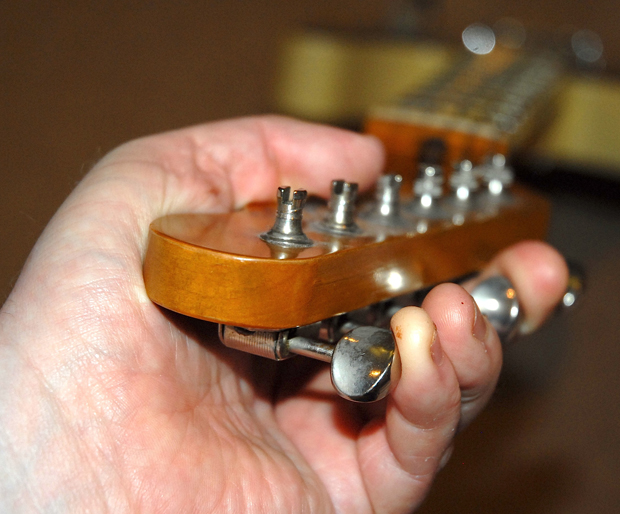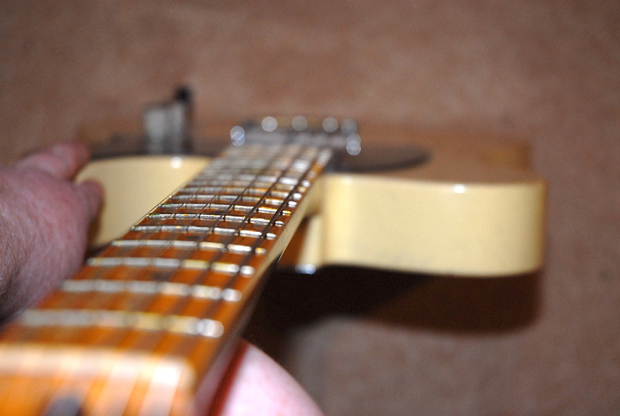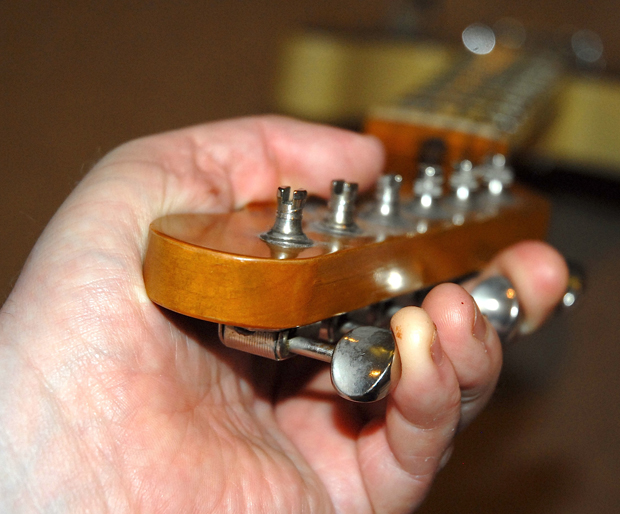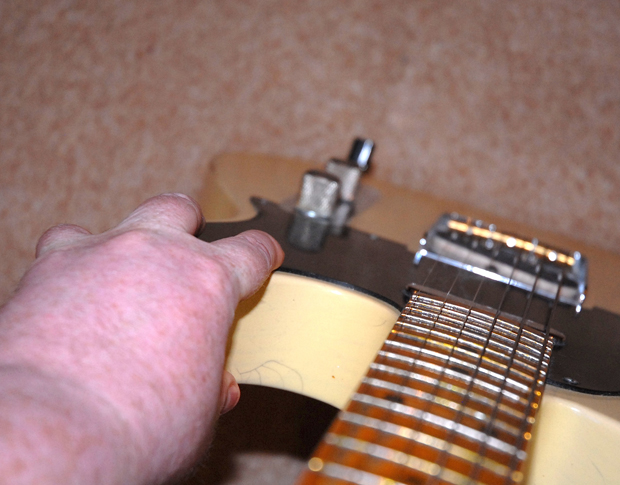How to Tell If Your Guitar’s Neck Needs to be Adjusted

One of my recent columns dealt with some of the things that can go wrong with your guitar’s top nut. Big slots, thin strings; the perfect recipe for horrible buzzes and rattles.
I realize you’re eager to dig out some tools and learn how to repair your faulty nut. Me too. We’re almost there, but, just for a moment, let’s take it down a notch. Think baby steps.
Those nasty string buzzes and rattles can also be caused by nut slots that are cut too low. In extreme cases, the string(s) might actually be sitting on the first fret; or often a string just has to be close enough to the fret to make contact when it’s struck open.
Your gut reaction might be to grab a hammer to beat the offending top nut to death and glue a new one in there. But wait. Just like a nut with worn or over-wide slots, you can repair perilously low slots with super glue.
Again, as Dick Van Dyke would say, diagnosis is everything. Don’t approach your guitar with any tool until you know A) what the problem is, and B) what you need to do to fix it.
Last time I mentioned that you should always make sure that a guitar is tuned up to pitch—or to any alternate tuning that it may be set up to handle. If the tuning isn’t right, it can affect the neck.
If the slots on the nut appear too low—you’re getting the buzzes and rattles when you play open strings, etc.—it could be that the neck needs to be adjusted. If the guitar is tuned too low, the neck won’t have enough tension on it and could be over-bent.
In layman’s terms, this means the middle of the fingerboard is higher than the headstock and body end. This can cause the strings to buzz over the first five or so frets.
To check if your guitar’s neck needs to be adjusted, you have to eyeball the neck itself. Hold the guitar by the body (See PHOTO 1 in the gallery below), never the headstock. If you hold the guitar by the headstock (See PHOTO 2), you’ll put pressure on the neck, which, although slight, will give you a false reading of the neck’s "straightness."
Now look down the bass side of the fingerboard (See PHOTO 3). Try closing one eye. You’ll look like Popeye, but it will help you focus. You should be able to tell if the neck is straight, dipped or over-bent. Repeat the process with the treble side of the fingerboard.
Armed with this information, you can decide whether the neck needs to be adjusted. Speaking of which ...
Soon, I’ll show you how to finish adjusting the neck and begin the process of repairing the slots in a faulty top nut. For the latter job, you’ll need super glue, which doesn’t cost much, and nut files. You can buy a set of nut files of varying gauges (about $140) from the likes of Stewart-MacDonald; or buy a single file (about $25) if you’re tackling a particular slot.
I would recommend investing in a full set. That way you’ll be able to build a top nut from scratch one day ... one of the most satisfying guitar maintenance jobs there is.
That’s something I’ll talk you through very soon. See you next time.



Get The Pick Newsletter
All the latest guitar news, interviews, lessons, reviews, deals and more, direct to your inbox!
Ed Mitchell was Reviews Editor on Total Guitar magazine from 2003, and his guitar-modding column, Ed’s Shed, appeared in print on both sides of the Atlantic (in both Total Guitar and Guitar World magazines). He was the Editor of The Blues Magazine from 2012-16, and a contributor to Guitarist, Classic Rock and Louder. He died in October 2022, aged 52. Between them, the websites Guitar World, Louder and MusicRadar host over 400 of his articles – among them interviews with Billy Gibbons, Paul Weller, Brian Setzer, profiles on Roy Buchanan, Duane Allman and Peter Green, a joint interview with Jimmy Page and Jack White, and dozens of guitar reviews – and that’s just the ones that made it online.








![Joe Bonamassa [left] wears a deep blue suit and polka-dotted shirt and plays his green refin Strat; the late Irish blues legend Rory Gallagher [right] screams and inflicts some punishment on his heavily worn number one Stratocaster.](https://cdn.mos.cms.futurecdn.net/cw28h7UBcTVfTLs7p7eiLe.jpg)


